When a winemaker’s label stalks you, it is best if you take the hint and give it a try.
Wells Guthrie’s Copain Wines had been popping up in front of me at wine shops, wine lists, wine events and wine articles for years. The word was always positive: “This guy gets it,” one wine shop owner had told me. “He has an Old World style with New World terroir … his wines are very food-friendly.” Sounds exactly like my kind of wine. But I passed on it that day, because that particular bottle — a single-vineyard Pinot Noir — was out of my budget.
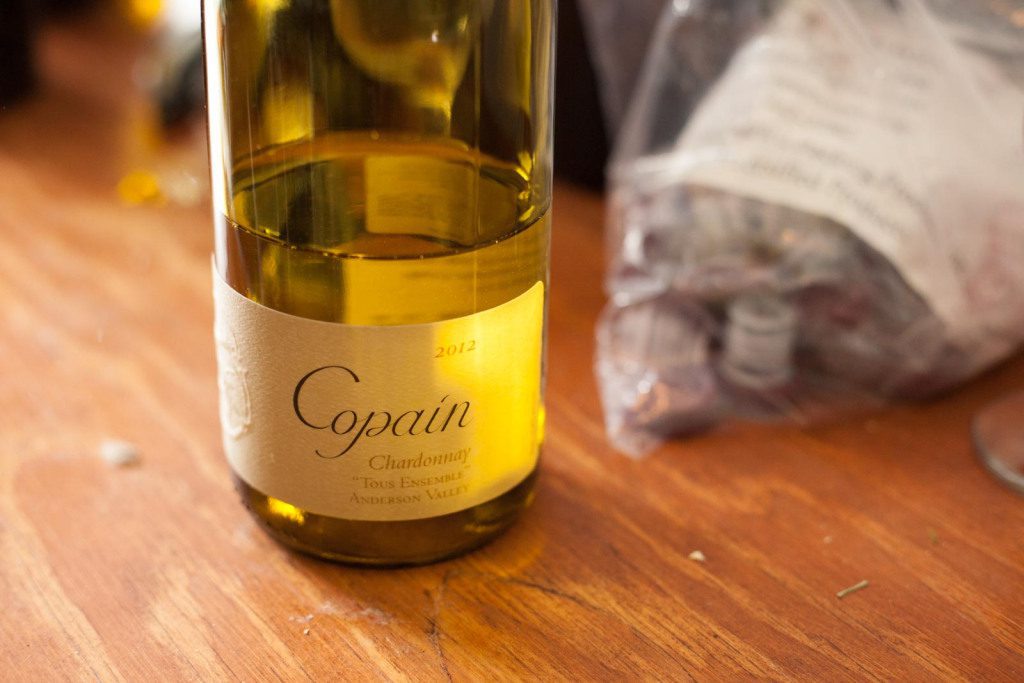
Someday, I knew, I’d get around to sampling Copain. And so, I’d flagged them for a possible tasting on this Sonoma trip.
But as time was running out on our final night in Healdsburg, it seemed like we might be done. Tasting-room fatigue was setting in for Hailey, and the day after, we were headed for Sea Ranch where I was promised one final wine-room visit at Fort Ross Winery, which has California’s closest vineyard to the ocean. After that, our vacation would shift to R&R mode with a little light hiking on the coast.
Something Was Missing
One thing was missing from our time in Sonoma: a killer meal. Believe it or not, our restaurant experiences had been average. Nothing to complain about, but given our foodie excitement coming into this trip, we’d expected better at the handful of restaurants we dined at in Point Reyes Station and Healdsburg.
With cautious optimism, we headed to Spoonbar, and it would easily be the best meal of our trip — perhaps of the year.
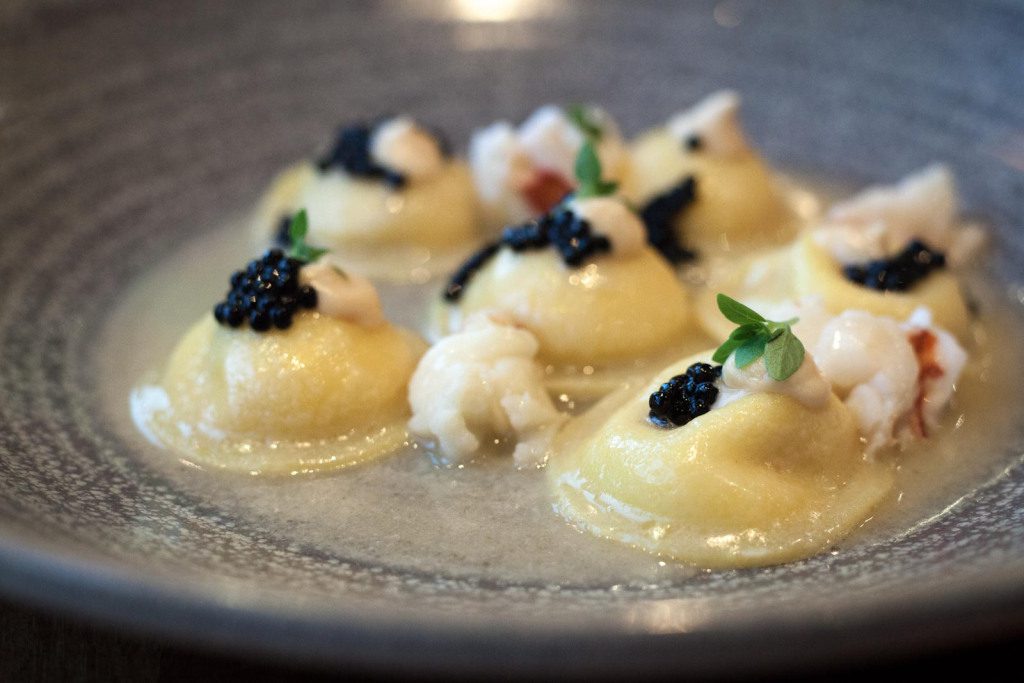
The menu was like reading the transcript of a Top Chef episode: roasted carrots with prosciutto and walnut vinaigrette. Beef tartare with caper mustard and egg-yolk gel. Roasted-corn ravioli with lobster and black truffle “caviar.” All of it was so, so good.
And as we placed our order, there was that familiar name I’d skipped several times: Copain “Les Voisin” Anderson Valley Pinot Noir. It may have been marked up to $75, but damn the torpedoes. It was time to see what the fuss was about over Copain.
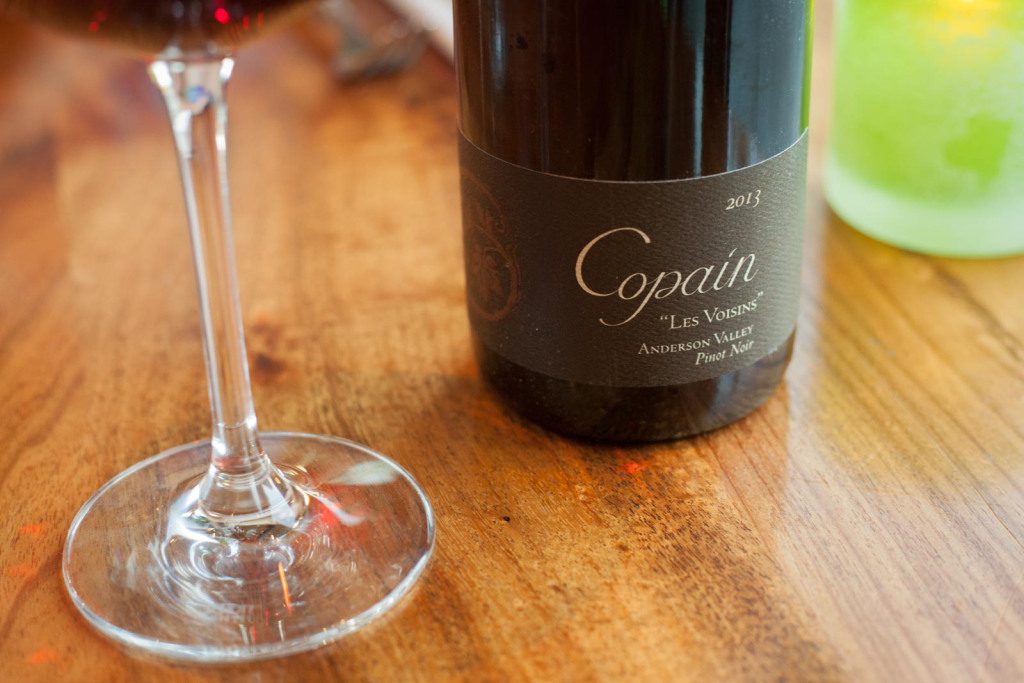
For the first time in days, we were tasting a wine from outside Sonoma. The Anderson Valley is a cool, wet region just north of Healdsburg and over the Mendocino County line. I’ve had dozens of Anderson Valley Pinot Noir. Its an area that produces lean yet energetic and vital wines that often conjure up flowers and underbrush and wet ground in their aromas. They are the antithesis of Russian River Valley Pinot Noir, and they are enhanced by how off-the-grid the Anderson Valley is. You don’t just pass through Boonville on the way to somewhere else. It is the Boonies, and it is gorgeous.
For me personally, the Les Voisins (★★★★★) is the most memorable of the Anderson Valley’s Pinot Noir. The aromas were poignant, shape-shifting and natural: like a whole flower garden of roses and gardenias, with deep bass notes of fruit — such as plum, cherry and raspberry — and even a swirl of spice on the finish. In fact, I’ve tasted few wines this year that can match its elegance, let alone its outstanding versatility. It accented the earthy notes of the roasted carrots, contrasted the savory and fatty flavors of beef tartare, and enhanced the subtlety of the roasted-corn ravioli with lobster. (See below for full review).
If it sounds like I’m swooning — embarrassingly so — then so be it. As much as I had enjoyed my stops at MacRostie, Arista and Red Car, they were done in a vacuum: without the benefit of tasting them alongside different flavors to see how they hold up. That’s not to say they wouldn’t hold up (I’m certain they would), but our evening at Spoonbar was the trip’s pinnacle moment from a wine-tasting standpoint.
So before we left town the next day, I wheedled Hailey into letting me stop for another tasting.
18 hours later …
Phil Robinson lead me out onto an empty patio where a rustic picnic table overlooked the Russian River Valley. It was another bright and hot summer day, but the winery’s location atop a hill brought in enough breeze to make it pleasant.
Phil was amiable and easygoing, despite the oncoming rush. He had squeezed me in at the last second, in between appointments, and I was grateful for his willingness to oblige a sudden super fan. Clearly, the tastings at Copain were more of a detailed presentation than a belly-up-and-get-a-pour kind of affair. Awaiting me at the table was a small plate of noshes: dried fruits, peach slices, toast with goat cheese, nuts and charcuterie. Most tasting rooms don’t offer this, but then again — given what they charge — maybe they should. Either way, it sent a subtle message that Copain’s wines shine brightest when they are paired.
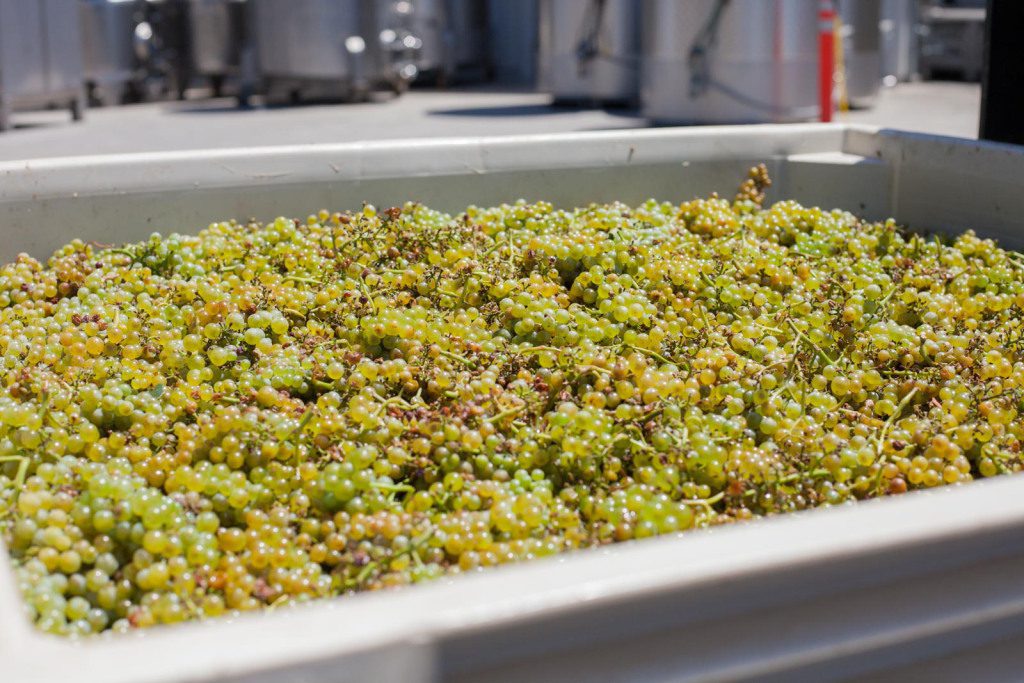
Hailey was opting out, choosing to read a book in an adirondack chair. “Buy a bottle for the coast and I’ll try their wines then,” she said. Phil brought her a glass of Chardonnay to enjoy anyway.
The day’s tasting would take us to points well beyond Sonoma. We began with the Laurels Grade Chardonnay (★★★★) from Monterrey, a fresh and lively wine aged in neutral French oak. It was certainly energetic, snapping the taste buds to attention with flavors of lemons and nuts. It wasn’t biting and it wasn’t coarse. A good warm-up.
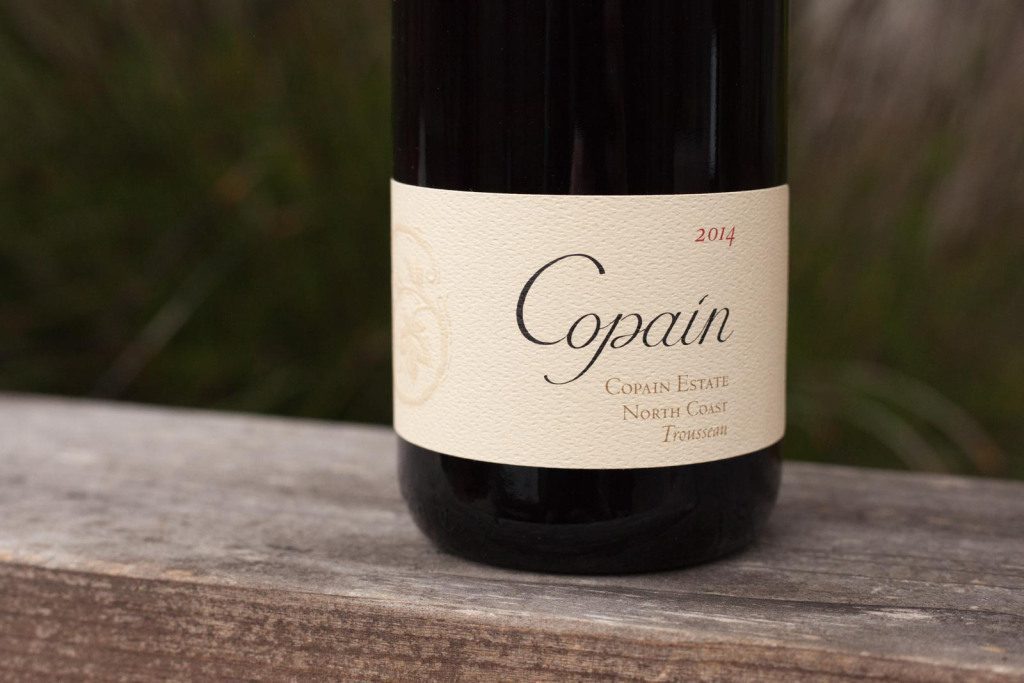
We then moved to a grape I’ve never encountered before: Trousseau, which sounds a hell of a lot more regal than its Portuguese name, Bastardo. Originating in Eastern France, it is most associated with the Jura region (where it is often blended with Poulsard) and Portugal, where it is a component in Port. But if Copain’s North Coast Trousseau (★★★★★) is any indication, this is a grape that needs to be cultivated more.
I loved this wine. Its appearance in the glass is similar to Pinot Noir, with a slightly opaque cranberry color. But the bouquet was singular, showing a great deal of baking spice and black pepper with a deep, inviting black raspberry tone underneath. Moderately acidic, delicately fruity and full of life, this wasn’t a California wine in character. It was French. I’d found my bottle to take to the coast. (See below for full review).
Next, Phil poured two single-vineyard Pinot Noir, both from the Anderson Valley. First was a taste of the Wendling Vineyard Pinot Noir (★★★★ 3/4). A fairly young vineyard, even by California terms, Wendling is already proving — at least with this tasting — to be capable of upper echelon juice. There was an intriguing earthiness to the aroma that was followed by very high-toned fruit recalling strawberries, cranberries and currants. Wendling is considered to be the closest vineyard site to ocean in the Anderson Valley. (It’s interesting how the most intriguing Pinot Noir always comes from the fringes, isn’t it?).
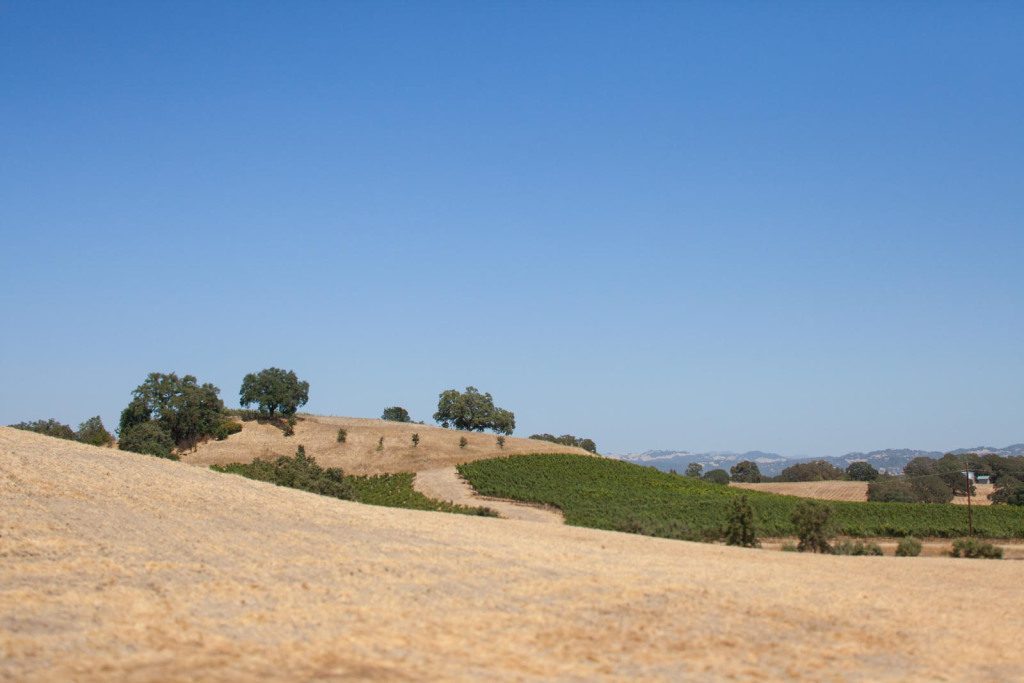
Meanwhile, the Kiser “En Bas” Pinot Noir (★★★★★) had quite a bit more earth on the nose, recalling a summer rainstorm. Similar fruit complexion, similar restraint and elegance. If anything, the finish was more peppery, while Wendling seemed to demonstrate a bit of slate-like minerality as it faded on the palate.
Knowing I’d enjoyed the Les Voisins Pinot Noir the night before, Phil brought it back out so I could see how it compared. Here was a real contrast. Made from a blend of vineyards throughout the belly of the Anderson Valley (Klindt, Abel, Hein and Henneberg to be exact), the cuvée seemed a great deal more floral, and all together more approachable, when tasted alongside the Wendling and Kiser “En Bas.” Similar to FEL Wines Savoy Vineyard Pinot Noir, it demonstrated a Red Zinger Tea-like aroma that’s like catnip to me. I told Phil about my conversation with FEL Wines’ winemaker last year, about how the blossoms of the pennyroyal plant in the valley seem to transfer something to the grapes.
He smiled when I noted this. “I’ve heard of that, too, as well as the eucalyptus plant … that its pollen sometimes drapes over the berries. There’s something there. Maybe we’ll never know for sure.”
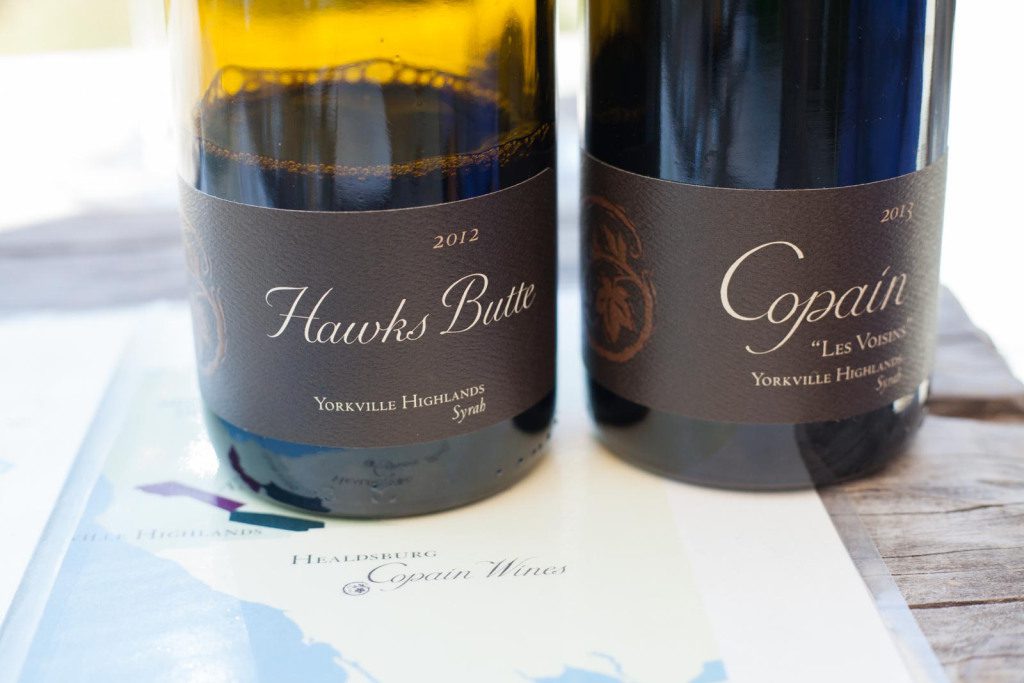
A Little Surprise
Phil poured the final wine, an outstanding Syrah (★★★★ 1/2) from the Yorkville Highlands AVA (a tiny appellation in the hills between Healdsburg and the Anderson Valley). It had tinges of rosemary on the nose, and an inviting swirl of powerful black fruit. But before I could really dive into it, a large semi-truck appeared and roared around to the back of the winery bearing several crates of grapes.
“That’s the 2016 Laurels Grade Chardonnay from Monterrey. It was just harvested last night,” Phil said. “Want to take a look?”
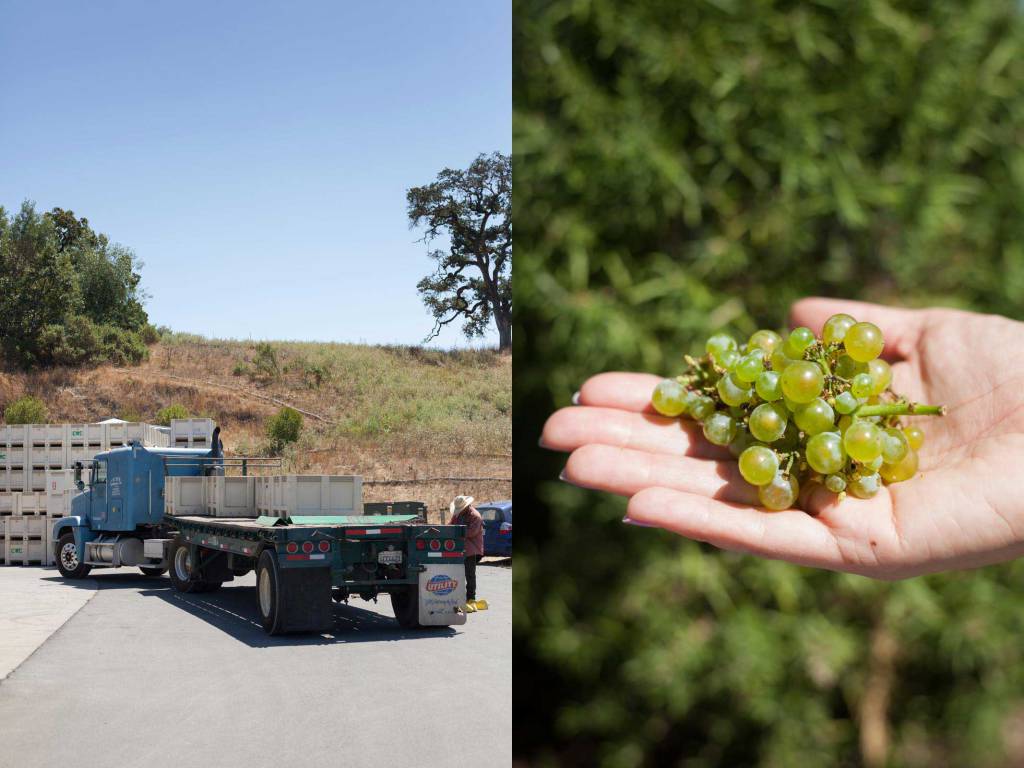
I gathered my notes and my camera and went to find Hailey. As we wandered around back, a forklift carried crates to a scale to be weighed. Phil suggested we try a cluster. It was sticky to the touch and surprisingly sweet on the palate. To my untrained palate, it tasted nothing like the Chardonnay I’d been served moments before, and it certainly didn’t taste smokey from the recent fires in Big Sur, which all summer long had been flirting with the vineyards in the Carmel Valley.
I felt like I’d come to learn more about Sonoma wine, and instead, my head was swirling with so much information. The more I tasted, the less I knew: Pennyroyal and eucalyptus? Maybe. Smoke in the air? Maybe. Taking a gamble and planting Trousseau in the North Coast and selling it to … who, exactly? How they pulled it all together with such consistency at Copain didn’t make a whole lot of sense. But they were doing it.
One fact had becoming abundantly clear. Winemakers like Wells Guthrie are magicians. I don’t want to know their secret.
2013 Copain “Les Voisins” Anderson Valley Pinot Noir
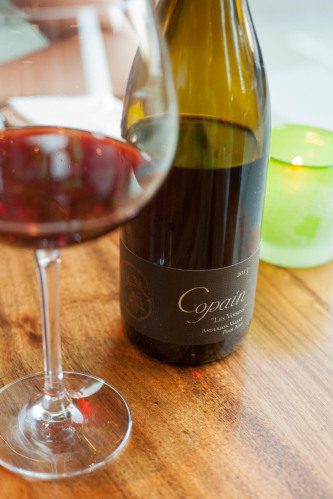 Anderson Valley AVA, California
Anderson Valley AVA, California
Grapes: Pinot Noir (100%)
Alcohol: 13%
Ratings: ★★★★★ (out of five)
• Aromas, Flavor & Structure: ★★★★★
Food-friendliness: ★★★★★
Value: ★★★★
Tasting notes: Heavenly. Aromas are highly floral, serving up a garden full of roses, gardenias, pennyroyal and eucalyptus, as well as swirls of red fruits (plum, cherry and raspberry) and baking spice. Palate is elegant and refined, yet still sprightly and playful with certain foods. A very versatile wine with a persistent, somewhat minerally finish.
Recommended for: A multi-course meal with a lot of different elements. Handles savory, fatty meats just as well as earthy mushrooms and vegetables, and creamy cheeses.
2014 Copain North Coast Trousseau
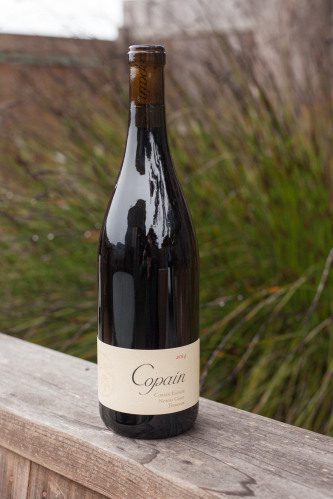 North Coast AVA, California
North Coast AVA, California
Grapes: Trousseau Noir (100%)
Alcohol: 12.8%
Ratings: ★★★★★ (out of five)
• Aromas, Flavor & Structure: ★★★★★
Food-friendliness: ★★★★ 1/2
Value: ★★★★
Tasting notes: An utterly unique wine for California. Beautiful opaque cranberry color, with a gentle nose presenting black raspberry, almond, and baking spice. Moderately acidic, delicately fruity, yet quite lively and natural in its presence. Reminds me of a Moulin-à-Vent but with a deeper fruit profile.
Recommended for: Charcuterie, sharp cheeses, peppadew peppers and other light noshes before dinner.
Most wine writers seek the same thing: answers. Easy, clear, and tested resolutions to their theories. It’s why they drink so much: they believe that the more they consume, the closer they will get to understanding patterns and profiles in a wine. Read more.
On a trip to explore the northern end of Sonoma — an area I thought produced the most interesting wines for my taste — we were unwittingly beginning our journey on the extreme southern fringes, in Carneros. Read more.
It’s a refrain you hear a lot from winemakers: great wine is made in the vineyard, not in the winery. But behind Ben’s comment was a subtle suggestion that while trends come and go, what he and his family were doing with Arista’s wines will endure. After all, he was just working with what nature was dealing him — and nature knows a thing or two about being timeless. Read more.
I wanted to visit Red Car. A month before, their Sonoma Coast Chardonnay blew me away. For me, it was a rare thing: a Chardonnay without noise. There was a purity in the fruit, and a restraint on the oakiness that really allowed for some compelling secondary aromas. Read more.
Part 4: Copain (you are here)
Compelling Pinot Noir in the Americas tends to come from the fringes: vineyards situated where the climate gives just barely enough sunlight and warmth to sustain, foster and ripen the berries into something beautiful. Read more.
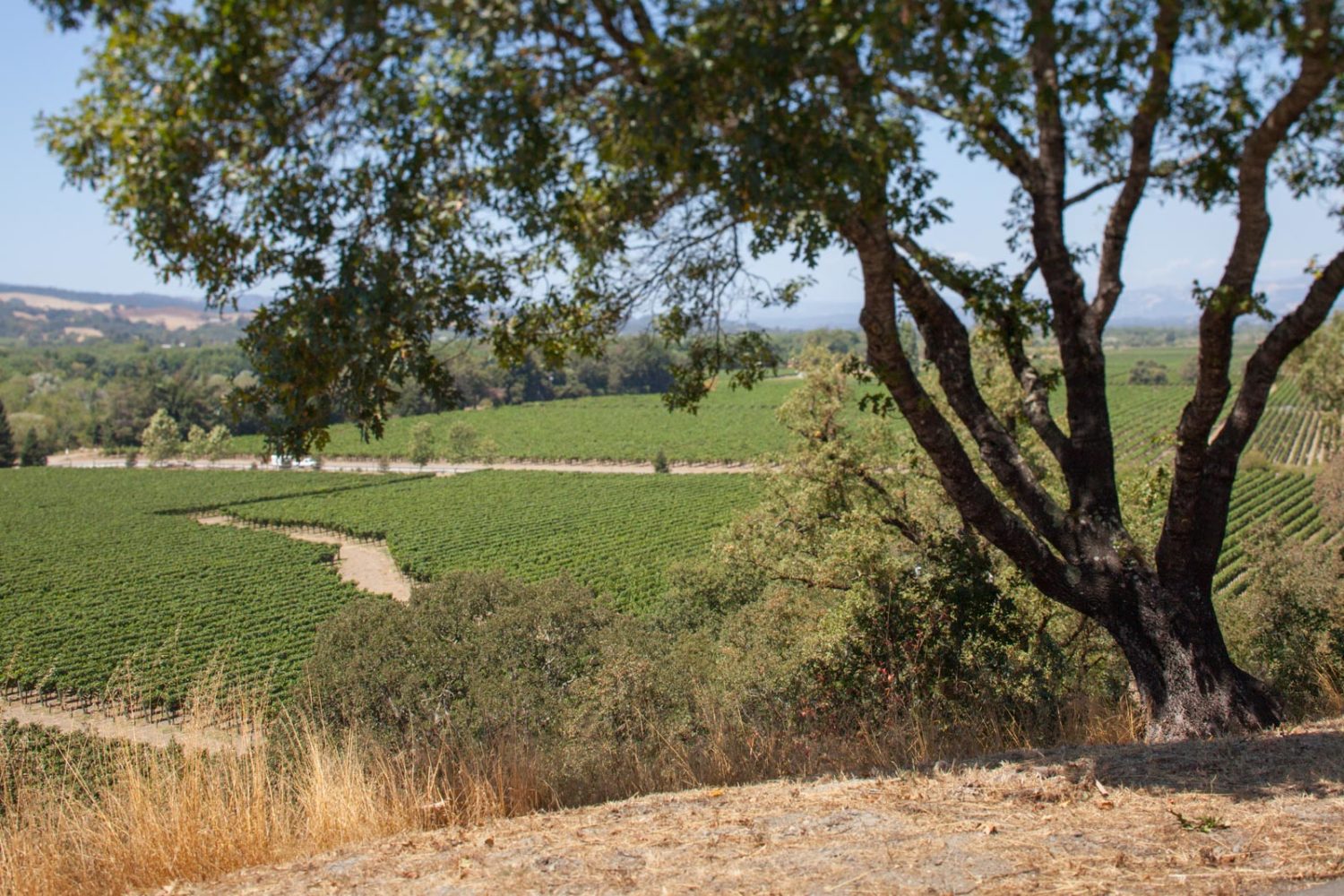

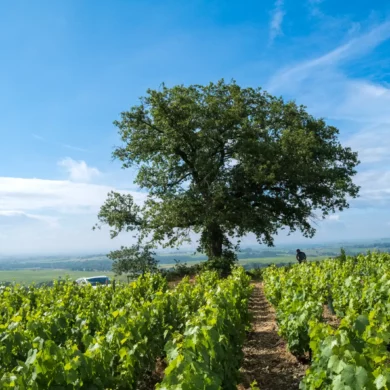
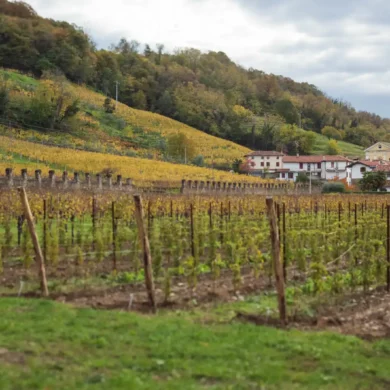
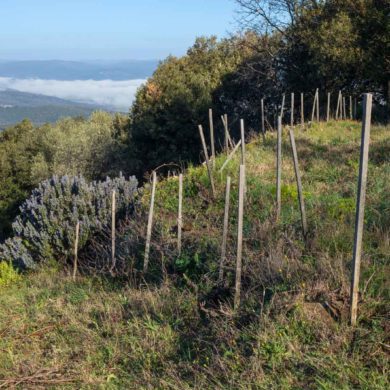
8 Comments